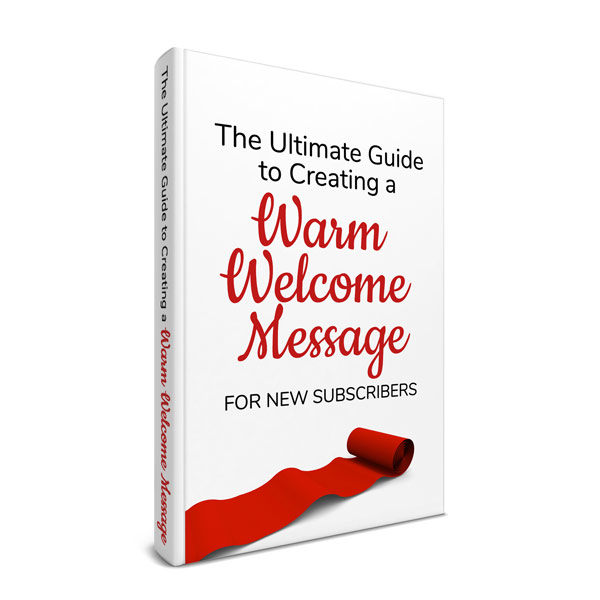
Wondering if you’ve missed the Golden Age of Webinars?
Perhaps you’re asking yourself:
- “Will people still sit through webinars, when I’m competing with so much marketing noise right now?”
- “Can hosting webinars help me build my email list?”
- “Do people still buy stuff from webinars?”
The answer to all three of these questions is YES. Unequivocally yes.
Inside Sales reported that 73% of sales and marketing leaders listed webinars as one of the best ways to generate top-quality leads for businesses.
Right now, 60% of B2B marketers use webinars as part of their overall content strategy.
People are definitely still viewing webinars, too. GotoWebinar reported that the average webinar attendee viewing time was 61 minutes in 2018.
Business are still using webinars to growing their lists and sell their products and services because webinars work.
However….the rules about selling on webinars have changed.
Slapping together a presentation and “winging it” doesn’t cut it anymore – and it can actually work against you as a marketer.
If you’re going to get people to sign up for, attend, and buy from your webinar, you must change your webinar strategy and think more strategically.
How the World of Webinars Has Changed – and What You Need to Do Next
1. There’s a lot of competition. Your audience is probably receiving a LOT of invitations to join webinars. Competition for attention is fierce, so you’ll have to work hard to stand out and persuade people to take action.
All of your marketing copy (from the beginning of your webinar funnel to the end) must be clear, compelling, and focused, and you need to frame everything from the customer’s perspective.
Ask yourself, “What is my prospect getting out of this?” and then focus exclusively on that. If it’s not important to your prospect, cut it.
Smart promotion strategies have always been a big part of any webinar’s success, but now it’s more important than ever that you promote your event far and wide across the web. Go out and spread the word yourself, using every tool available (including your website, network, email list, and social media platforms).
2. Webinar participants are picky. Years ago, you could get away with only giving away a teensy bit of content on your webinars. You could use your webinar primarily to sell your product or service, and your audience would be fairly forgiving. You could still make sales.
It’s not like that anymore.
Your webinar participants want you to cut the fluff and give practical, actionable advice that holds their attention and doesn’t bore them into a stupor. If you don’t do that, people will drop off your live calls in droves.
If your webinar is one long sales pitch, you’ll get called out for it on social media – and you’ll be on the hook to explain yourself.
That said, you also can’t give away too much on your webinar (yes, it is possible to give too much).
When it comes to content, finding the balance between “too much” and “too little” is critical.
Design and select your presentation slides carefully, and make sure every second of your webinar contributes to your overall goals of sharing information and making sales.
3. What you’re selling MUST be a perfect fit for your webinar participants. Your customers are bombarded with offers all day long, and they say no to almost all of them.
The product or service you’re selling on your webinar must directly align with an urgent problem your participant is struggling with – otherwise, they’ll say no.
Don’t create products based on what you think people need, or what you think would be fun to create – ask your clients, and create products based on themes and problems you hear consistently!
4. The terminology has changed. When webinars initially became popular as a marketing tool, you could just call them “webinars” in your emails and registration pages.
These days, some consumers have a negative association with the word, and they think of a webinar as something that has a very low value – so you might get better results if you call your live event a master class or workshop. Switching to a different term could make a major difference in your sign up, participation, and sales conversion rates.
This isn’t a hard-and-fast rule, thought. For some prospects, a webinar is still a high-value event.
Talk to your prospects and clients, and find out whether or not the term “webinar” turns them off.
5. Prospects won’t tolerate tech problems. There are a LOT of other things your prospects could be doing with their valuable time, so patience levels are at an all-time low.
If you spend the first five minutes of your broadcast fiddling around with your webinar tool, trying to get the audio to work, or trying to share your screen, participants will bail…and they probably won’t sign up for another one of your webinars.
I understand that sometimes tech problems happen (there will always be SOMETHING that goes wrong), but you can minimize problems by running multiple test webinars in advance and making sure you know exactly how to use your platform.
Don’t rely on replays or recordings to cover your tech mistakes, either – some people will watch them, but most people won’t!
6. Thou shalt not lie to your audience members. Building trust with your audience is one of the best reasons to host webinars. Cultivating a positive relationship with people is key…and people won’t trust you if you lie to them.
Don’t tell people your webinar is live if it’s not. Don’t say in advance that you’re going to answer questions in a Q&A if you’re not actually going to do it.
Check every part of your funnel, and make sure you’re not lying in ANY step in your sales process. People will find out, and they will feel cheated and skeptical of you when they do. Skeptical audiences never buy.
7. Use all that data to your advantage. These days, you can get tons of useful information about your prospects from your webinars. With most email service providers, you’ll be able to see:
- Who clicks on the invitation link and viewed the registration page.
- Who signed up and actually participated in the event.
- Who signed up and DIDN’T show up for the live event.
- Who stay engaged with the entire presentation, and who dropped off early.
- Who clicked on your follow-up sales page, when you sent it via email.
You can use this information to specifically tailor your email messages, based on the client’s behavior and needs. You can also create segmented content for those list groups in the future.
A targeted, customized follow-up message to a prospect will ALWAYS convert better – so plan on analyzing and using your data in smart ways that build trust and bring in more sales.
8. You must give a great sales pitch. Your prospects have (most likely) been to webinars before, and most of them expect a pitch during your event, and the RIGHT prospect won’t be annoyed by this.
But it must be the RIGHT pitch, and you must deliver it well.
If you stammer, apologize, falter, or rush through your sales pitch, you’ve blown the most important part of your presentation – and all your promotion, practicing, planning, and testing will all be for nothing.
The Continual Sales Power of Webinars
Webinars are still one of the best tools for engaging with prospects, building trust, and making sales.
If you navigate the new rules gracefully, webinars can become one of your most valuable income streams – but you must watch for market shifts, track analytics carefully, and listen to feedback you get from your participants.
It’s time for you to stop doubting the effectiveness of webinars, and start working on your next webinar.
Webinar success is right there at your fingertips – if you’re smart and savvy enough to reach for it.
P.S. Whenever you’re ready, here are three ways I can help you:
1. Fix an underperforming webinar and get more conversions.
If you’re a course creator or high-end service provider who is hosting webinars to promote your products and services, my webinar review service can you spot what’s clogging up conversions in your presentation. Click here to find out how to get your personalized webinar review.
2. Get a word-for-word script for a webinar that sells.
If the sales pitch is where you get stuck, and you need help selling with confidence, I can create a full sales pitch script for your webinar. Just email me and put “Convert” in the subject line to get the details.
3, Persuade your audience to sign up, show up, and buy.
Promoting a webinar and doing effective follow-up requires a lot of copy. That means registration pages, thank you pages, email sequences, and sales pages. I can write the copy you need to create a winning webinar that attracts subscribers, builds trusts, and boosts revenue. Tell me a little bit about your business and what you’re struggling with right now, and I’ll reply back ASAP.


2 thoughts on “Do Webinars Still Work?”
We had an interesting discussion in one of my practitioner groups about whether summits still work. Most people felt the area was over-saturated, although a few very targeted summits did well. Maybe careful, specific targeting is another thing to think about with webinars, too.
Hi Beth!
Would love to talk to you about a webinar we are planning, Occupational Dog Bite Safety. Have always presented the information in person but now looking to get off the road. Please let me know if you are available to help.
Thank You!